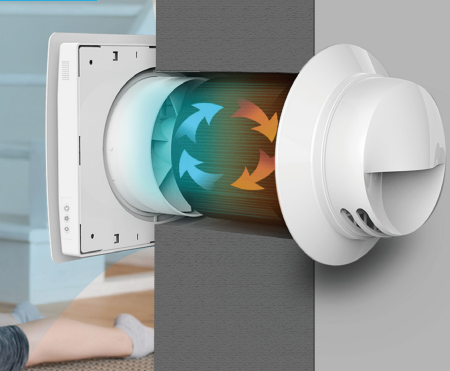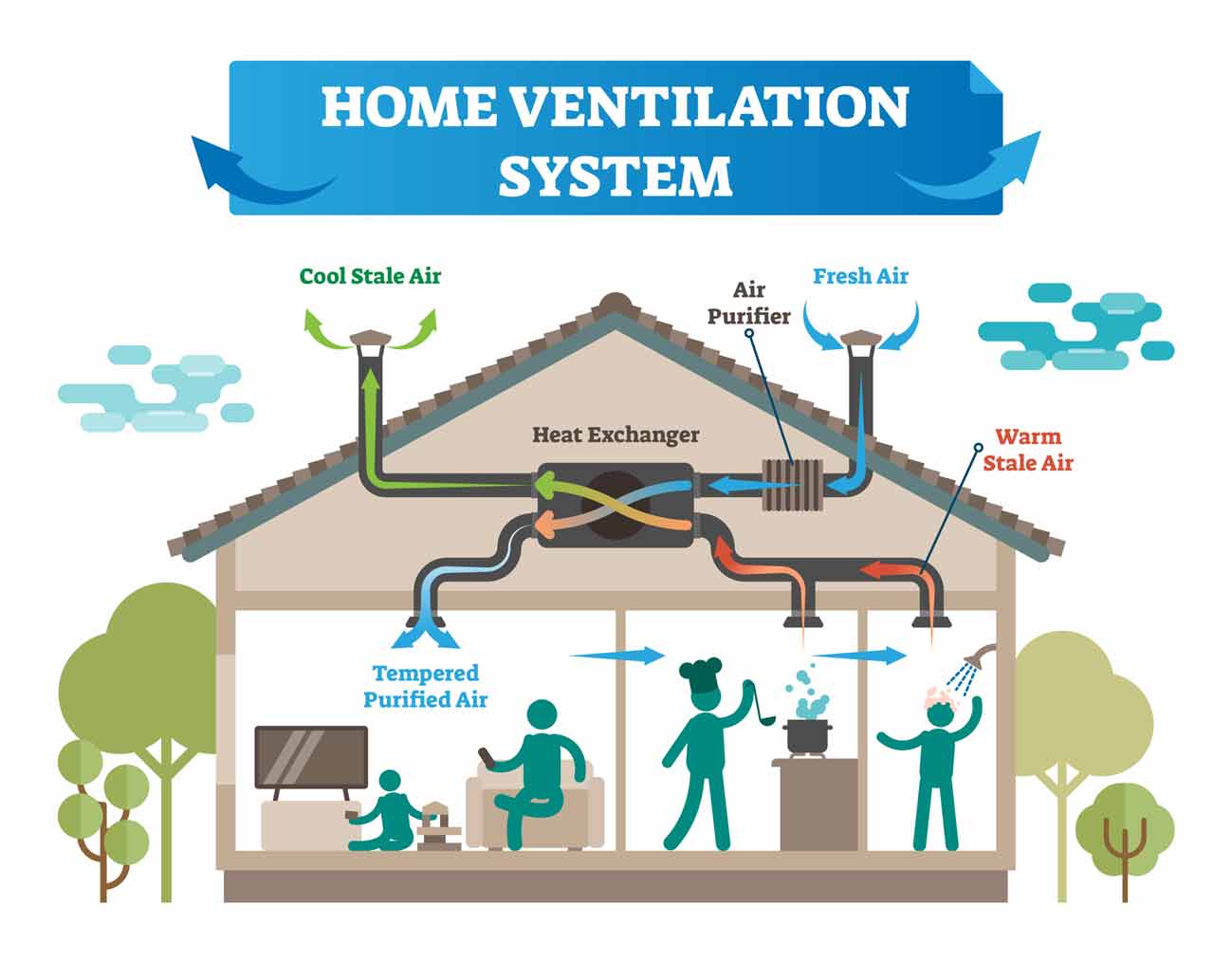Understanding HRV: A Complete Overview
Exploring the Perks of Heat Recovery Ventilation for Energy Efficiency in Homes
Heat Recovery Ventilation (HRV) systems offer house owners a functional technique to improving energy efficiency. By recovering warmth from outward bound air, these systems can significantly minimize cooling and heating expenses. In addition, they offer a steady supply of fresh air, boosting indoor air top quality and convenience levels. As homeowners think about lasting options, recognizing the subtleties of HRV systems comes to be progressively vital. What aspects should one review prior to making such an investment?
Understanding Heat Recovery Ventilation Solutions

Just How HRV Boosts Indoor Air Quality

Energy Cost Savings: The Financial Benefits of HRV
Taking full advantage of energy effectiveness, heat recovery ventilation (HRV) systems provide considerable economic benefits for house owners. By recouping and reusing heat from exhaust air, HRVs significantly decrease home heating and air conditioning expenses. This technology can result in energy cost savings of approximately 30%, relying on environment and use patterns. Property owners commonly see lowered utility costs quickly after installation, making HRVs an economically smart investment with time. Additionally, several Read Full Article regions offer rewards or discounts for energy-efficient upgrades, further boosting the monetary appeal. As power costs proceed to rise, the cost-effectiveness of HRVs comes to be increasingly clear. Generally, the unification of HRV systems not only advertises power effectiveness but additionally adds to long-lasting financial cost savings for families.
The Environmental Impact of Heat Recovery Ventilation
A considerable ecological benefit of heat recovery ventilation (HRV) systems exists in their ability to lower overall energy usage. By redeeming heat from exhaust air and transferring it to incoming fresh air, HRV systems lessen the need for energy-intensive heating and cooling down approaches. This reduction in energy demand adds to decrease greenhouse gas exhausts, as less fossil fuel is called for to preserve comfortable interior temperature levels. Additionally, HRV systems boost indoor air high quality by efficiently exchanging stale air with fresh outside air, minimizing reliance on mechanical air conditioning systems that can harm the atmosphere. In general, the execution of HRV systems supports sustainable living methods and straightens with global efforts to combat environment modification by promoting energy efficiency in household setups.
Choosing the Right HRV System for Your Home
How can house owners assure they select the appropriate heat recovery ventilation (HRV) system for their demands? They ought to evaluate their home's dimension and design, as these aspects affect air flow requirements. Next, assessing the system's performance rankings is essential, as higher scores show better performance and power savings. Home owners need to additionally take into consideration setup and upkeep costs, contrasting different brand names and versions for value. In addition, it is necessary to assess sound degrees, as some systems operate more quietly than others. Consulting with HVAC experts can supply customized recommendations my blog based on specific home conditions. Ultimately, analyzing user evaluations and warranties can help in making a notified decision, browse around this web-site making certain that the picked HRV system efficiently enhances indoor air quality and energy effectiveness.
Frequently Asked Questions

Just how Typically Should I Tidy or Preserve My HRV System?
The frequency of cleaning or preserving a warmth healing air flow (HRV) system normally depends upon use and environmental aspects. Typically, it is recommended to do maintenance every six months to ensure peak efficiency and air quality.

Can HRV Systems Help In Reducing Moisture Degrees Inside Your Home?
HRV systems can effectively decrease interior humidity levels by exchanging stagnant, humid air with fresh, drier air from outside. HRV Heat Recovery Ventilation. This procedure aids maintain a well balanced indoor atmosphere, boosting comfort and stopping moisture-related concerns
What Is the Life-span of a Normal HRV System?
The life-span of a common heat recovery ventilation (HRV) system varies, usually lasting in between 10 to 15 years. Routine maintenance can expand its performance and functional life, ensuring peak performance throughout its usage duration.
Exist Any Type Of Sound Concerns With HRV Systems?
Noise worry about HRV systems can emerge, especially from follower procedure. Numerous contemporary systems are developed to reduce audio degrees, ensuring they operate quietly while maintaining efficiency, which addresses potential disruptions in living atmospheres.
Can I Install an HRV System Myself, or Do I Need a Specialist?
The specific contemplated whether to set up the heat recovery ventilation (HRV) system personally or hire a professional. Normally, while DIY setup is feasible, competence assurances appropriate functionality and conformity with regional building ordinance, improving system effectiveness.